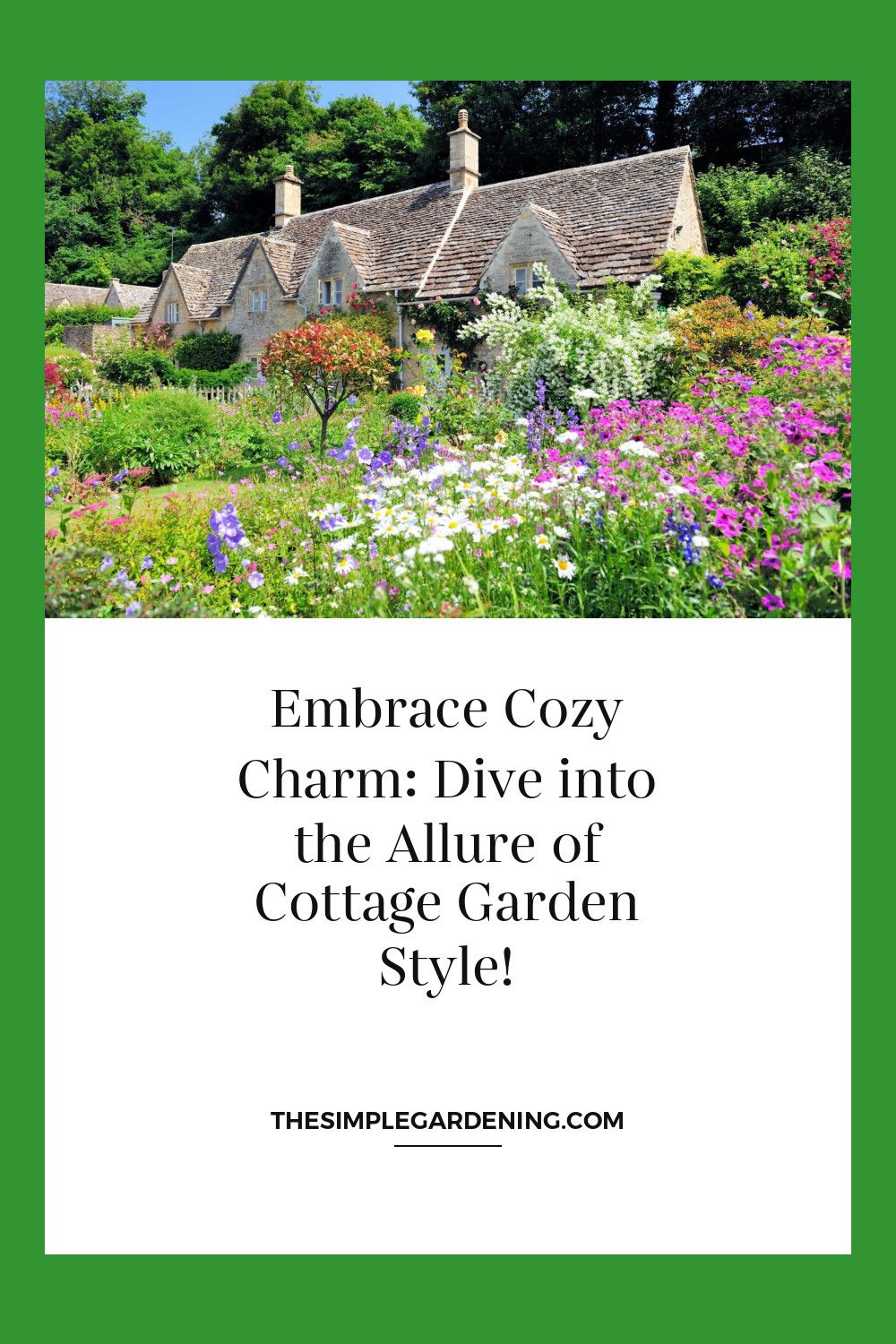The charm of a cottage garden lies in its delightful blend of informality, abundance, and timeless appeal. With roots steeped in history, these gardens offer a perfect retreat that exudes rustic elegance and unpretentious beauty.
Definition and Characteristics of Cottage Gardens
Cottage gardens are defined by their informal design, dense plantings, and a mix of flowers, herbs, and vegetables. They are characterized by:
- Abundance: Plants are packed closely together, creating a lush, overflowing look.
- Diversity: A variety of plants, including perennials, annuals, herbs, and vegetables, are combined.
- Natural Pathways: Winding, often narrow paths invite exploration.
- Functional Aesthetics: Decorative elements like trellises, arbors, and vintage furniture serve both ornamental and practical purposes.
Table: Key Characteristics of Cottage Gardens
| Feature | Description |
|---|---|
| Plant Density | Dense, close planting for a lush appearance |
| Plant Variety | Mix of flowers, herbs, and vegetables |
| Informal Layout | Natural, free-form design without strict lines |
| Decorative Structures | Use of rustic fences, arbors, and trellises |
| Functional Elements | Elements that serve practical and decorative purposes |

Source Image: horticulture.co.uk
Historical Origins and Evolution of the Cottage Garden Style
Cottage gardens have humble beginnings in England, dating back to the 16th century. Initially, these gardens were practical, designed to supply families with food, herbs, and flowers. Over time, the aesthetic appeal became just as important, evolving into the charming, flower-filled landscapes we cherish today.
Cottage Garden Layout and Structure
Creating a cottage garden involves embracing an informal design that mimics nature’s own arrangements. The key is to blend plants in layers and groupings, achieving a cohesive yet unstructured look.
Informal Design Elements
In cottage gardens, symmetry and formality are replaced by spontaneity and variety. Here’s how to achieve that:
- Curved Pathways: Avoid straight lines; use winding paths to create a sense of discovery.
- Natural Edging: Use plants like lavender or boxwood for soft, organic borders.
- Varied Heights: Combine plants of different heights to create depth and interest.
Table: Elements of an Informal Design
| Element | Tips for Implementation |
|---|---|
| Curved Pathways | Lay out paths that meander through the garden, inviting exploration |
| Natural Edging | Use low-growing plants or informal hedges to define spaces without strict lines |
| Varied Plant Heights | Layer tall, medium, and short plants to create visual interest and a sense of depth |
| Random Groupings | Plant in clusters rather than rows, mimicking a natural, untamed look |
Mixing Plants in Layers and Groupings
Layering plants involves placing taller plants at the back or center and shorter ones at the front. Group plants by their growth habits and bloom times to ensure continuous interest.
Point List: Benefits of Layered Planting
- Visual Depth: Adds dimension and prevents the garden from looking flat.
- Continuous Bloom: Ensures something is always in bloom.
- Pest Control: Reduces the spread of pests by diversifying plant types.
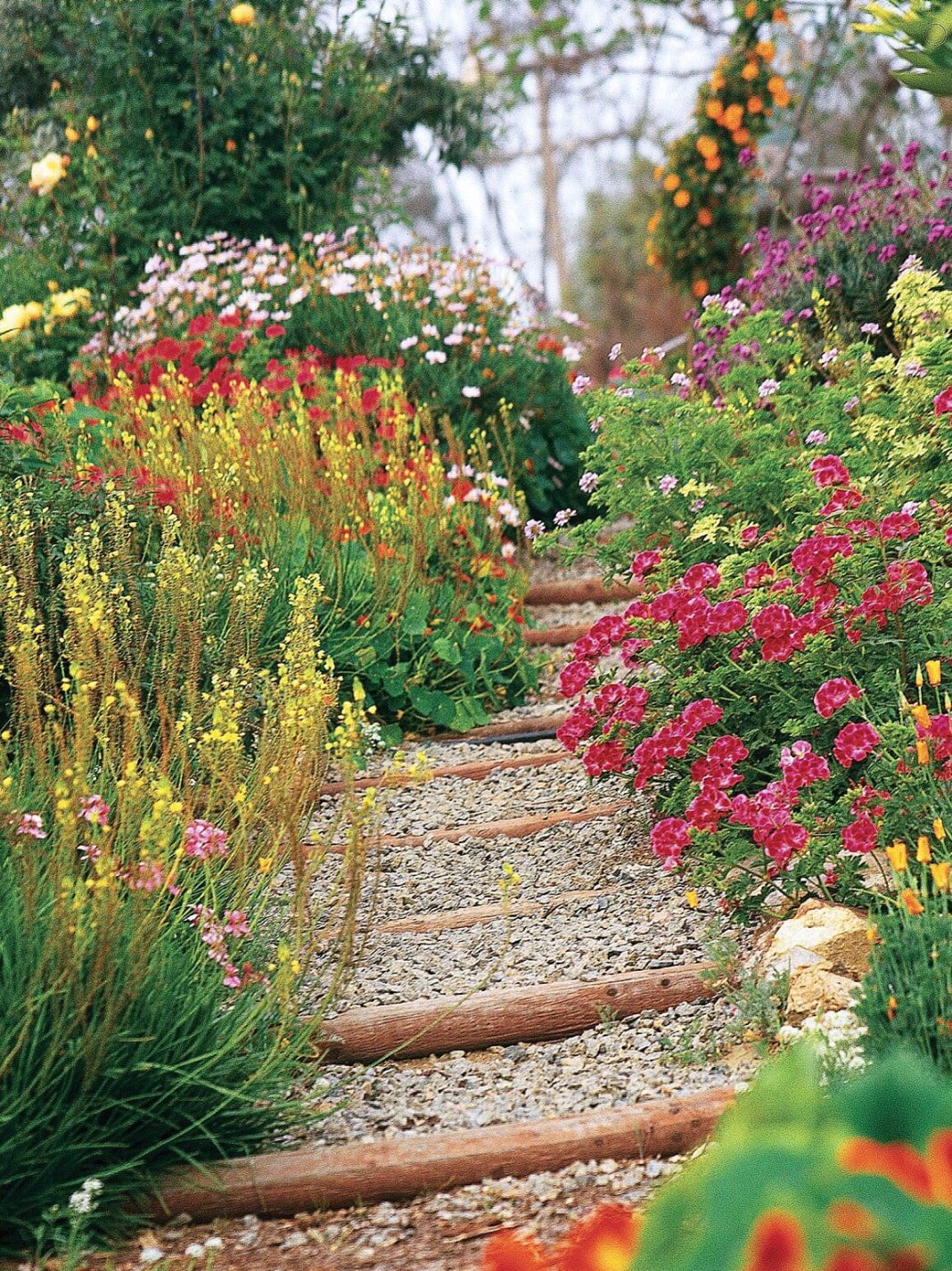
Source Image: diymorning.com
Plant Selection for Cottage Gardens
Choosing the right plants is essential for achieving the cottage garden look. Focus on a mix of traditional cottage plants, wildflowers, and native species to create a robust and enchanting garden.
Choosing Traditional Cottage Garden Plants (Perennials, Annuals, Herbs)
Traditional cottage garden plants include a variety of perennials, annuals, and herbs known for their beauty and hardiness.
Table: Traditional Cottage Garden Plants
| Type | Examples | Characteristics |
|---|---|---|
| Perennials | Delphiniums, Peonies, Foxgloves | Long-lived, come back year after year |
| Annuals | Sweet Peas, Marigolds, Cosmos | Fast-growing, bloom for one season |
| Herbs | Lavender, Rosemary, Thyme | Aromatic, often have culinary or medicinal uses |
Incorporating Wildflowers and Native Species
Wildflowers and native species are perfect for cottage gardens due to their natural resilience and ability to attract pollinators.
Point List: Advantages of Wildflowers and Native Species
- Low Maintenance: Adapted to local conditions, requiring less care.
- Biodiversity: Support local wildlife, including beneficial insects.
- Seasonal Interest: Provide blooms at different times of the year, adding ongoing interest.
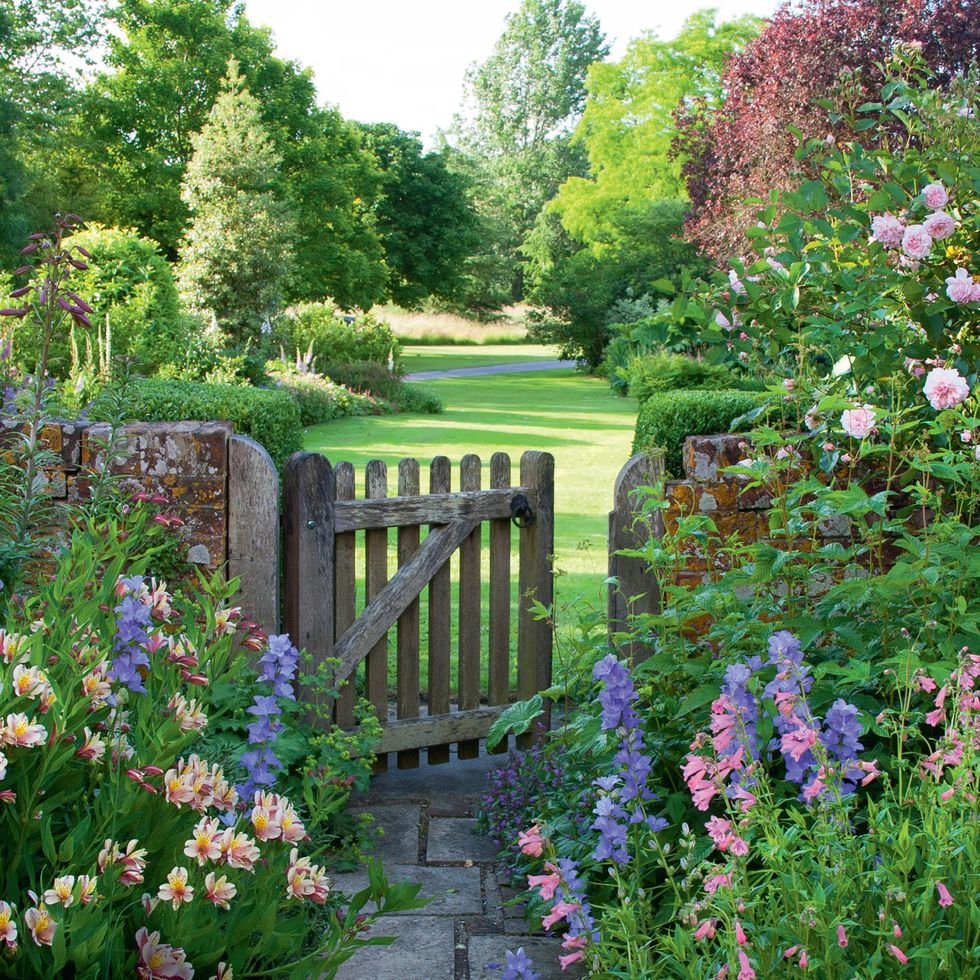
Source Image: www.countryliving.com
Creating a Cottage Garden Color Palette
Color plays a significant role in the cottage garden’s charm. Whether you prefer soft pastels or bold hues, creating a harmonious color palette is key.
Soft and Pastel Shades vs. Bold and Vibrant Colors
Both soft pastels and bold colors have their place in cottage gardens. Pastel shades create a calming, romantic atmosphere, while vibrant colors can energize and brighten the space.
Table: Color Palettes for Cottage Gardens
| Palette Type | Colors Included | Effect |
|---|---|---|
| Soft and Pastel | Pink, lavender, white, light blue | Creates a serene, romantic ambiance |
| Bold and Vibrant | Red, orange, deep purple, bright yellow | Adds energy, draws attention to focal points |
Creating Harmony and Balance with Color Combinations
Combining colors effectively ensures that your garden is pleasing to the eye. Use the color wheel to find complementary and analogous colors that work well together.
Point List: Tips for Color Harmony
- Complementary Colors: Pair colors opposite each other on the color wheel for a vibrant look.
- Analogous Colors: Use colors next to each other on the color wheel for a harmonious effect.
- Repetition: Repeat colors throughout the garden to create unity.
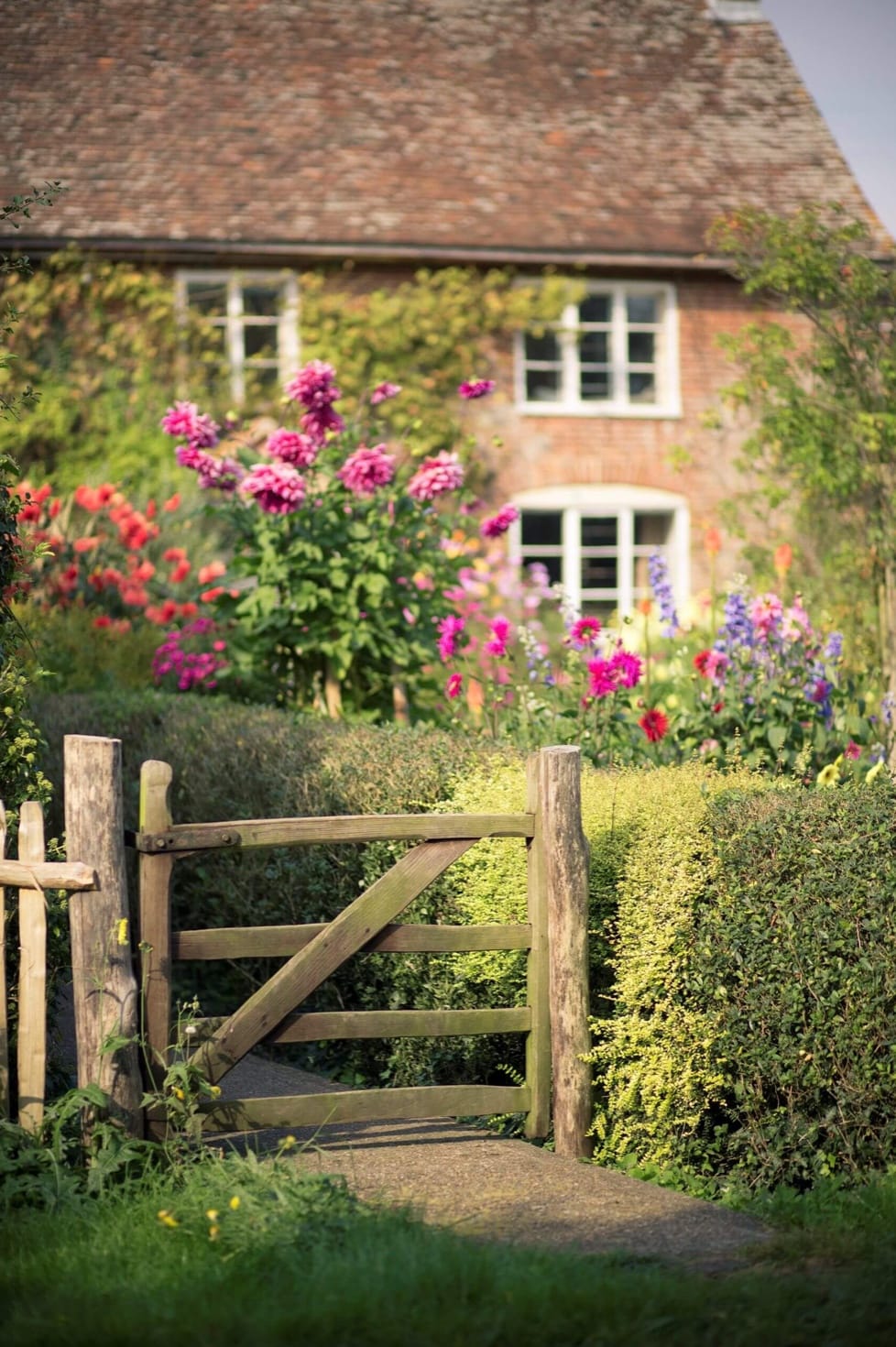
Source Image: diymorning.com
Cottage Garden Style
Cottage Garden Features and Structures
Incorporate rustic elements and structures to enhance the cottage garden aesthetic. These features add both functionality and charm.
Rustic Fences and Trellises
Rustic fences and trellises provide structure and support for climbing plants while adding to the garden’s quaint appeal.
Table: Common Cottage Garden Structures
| Structure | Purpose | Aesthetic Benefit |
|---|---|---|
| Rustic Fences | Define boundaries, support plants | Adds charm, frames the garden |
| Trellises | Support climbing plants like roses and clematis | Creates vertical interest, saves space |
| Arbors | Serve as entry points or focal areas | Adds height, invites entry |
| Pergolas | Provide shade, support for vines | Creates a cozy outdoor space |
Arbors, Pergolas, and Garden Sheds
These larger structures not only provide practical benefits but also become focal points in the garden.
Point List: Benefits of Garden Structures
- Shade and Shelter: Pergolas and arbors provide shade and shelter.
- Storage: Garden sheds offer storage for tools and supplies.
- Aesthetic Appeal: Adds architectural interest and depth to the garden.
/ivy-covered-english-style-cottage-colorful-garden-grass-10057581772583b5dbc6854ddea893b9534615c0b7d5db86f-185954249de94bb98dad2c96a071027f.jpg)
Source Image: www.bhg.com
Cottage Garden Pathways and Walkways
Pathways and walkways guide visitors through the garden, offering different perspectives and experiences.
Natural Stone Paths
Natural stone paths blend seamlessly with the garden, enhancing its organic feel.
Table: Materials for Cottage Garden Pathways
| Material | Characteristics | Aesthetic Impact |
|---|---|---|
| Natural Stone | Durable, natural look | Blends well with the garden’s theme |
| Gravel | Easy to install, allows for drainage | Informal, rustic appearance |
| Brick | Classic, traditional feel | Adds a touch of formality |
Gravel Walkways with Edging
Gravel walkways are practical and easy to maintain. Use edging to keep the gravel in place and define the path.
Point List: Creating Effective Walkways
- Edging: Use stone, brick, or metal edging to contain the gravel.
- Width: Ensure paths are wide enough for comfortable walking.
- Maintenance: Regularly rake the gravel to keep it even.
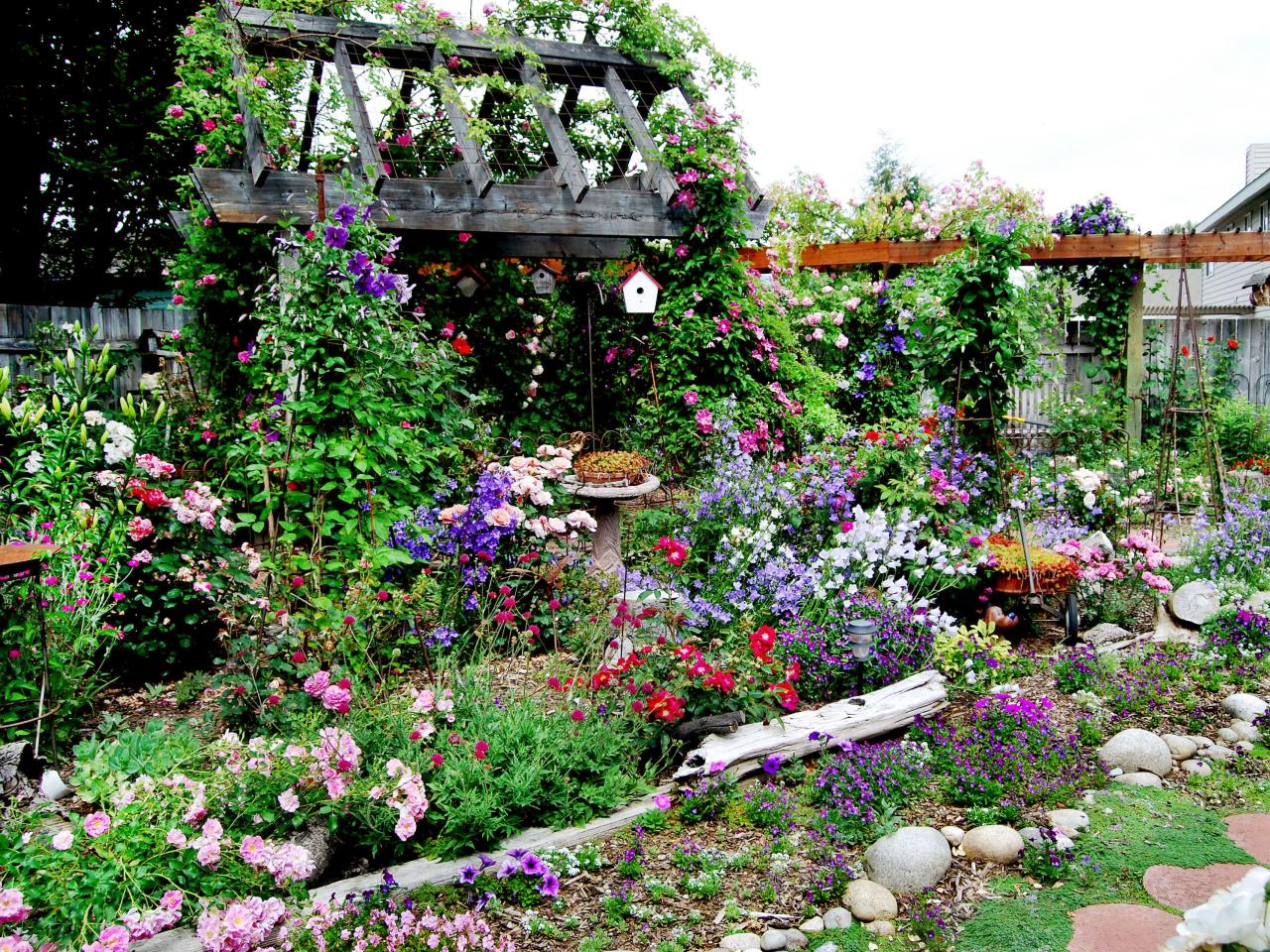
Source Image: www.stevewilliamskitchens.co.uk
Incorporating Vintage and Repurposed Elements
Adding vintage and repurposed items can enhance the cottage garden’s nostalgic feel and sustainability.
Upcycled Containers and Garden Decor
Upcycled containers and decor add unique character and reduce waste.
Table: Upcycled Elements for Cottage Gardens
| Item | Source | Garden Use |
|---|---|---|
| Old Buckets | Flea markets, garages | Plant containers |
| Vintage Furniture | Antique shops, thrift stores | Seating, planters |
| Reclaimed Wood | Construction sites, old furniture | Garden beds, decorative elements |
| Glass Bottles | Recycling centers | Edging, decorations |
Vintage Furniture and Garden Ornaments
Incorporate vintage furniture and ornaments to create cozy, nostalgic nooks within your garden.
Point List: Using Vintage Elements
- Seating: Use old benches and chairs for seating areas.
- Decor: Add old tools, birdcages, or lanterns as decorative items.
- Planters: Repurpose old drawers or crates as unique planters.
Maintenance Tips for Cottage Gardens
Maintaining a cottage garden involves regular care and attention to ensure it remains beautiful and healthy.
Deadheading and Pruning Techniques
Deadheading and pruning are essential for encouraging new growth and maintaining plant health.
Table: Maintenance Activities
| Activity | Purpose | Best Practices |
|---|---|---|
| Deadheading | Promotes new blooms | Remove spent flowers regularly |
| Pruning | Shapes plants, removes dead or diseased parts | Prune in late winter or early spring |
| Mulching | Retains moisture, suppresses weeds | Apply a layer of organic mulch annually |
| Weeding | Reduces competition for nutrients | Weed regularly to prevent spread |
Managing Self-Seeding Plants
Self-seeding plants can create a natural, spontaneous look but need to be managed to prevent overgrowth.
Point List: Tips for Managing Self-Seeders
- Control Spread: Remove excess seedlings to prevent overcrowding.
- Selectively Allow: Let some plants self-seed in desired areas.
- Annual Monitoring: Keep an eye on self-seeders each season.

Source Image: www.idealhome.co.uk
Cottage Garden Style
Cottage Garden Planting Techniques
Effective planting techniques can enhance the lush, abundant look of a cottage garden.
Intensive Planting for Lushness and Abundance
Intensive planting involves placing plants closely together to create a dense, full appearance.
Table: Intensive Planting Tips
| Technique | Benefit | How to Implement |
|---|---|---|
| Close Spacing | Maximizes use of space | Plant slightly closer than recommended |
| Layered Planting | Adds depth and interest | Combine tall, medium, and short plants |
| Companion Planting | Enhances growth and health | Pair plants that benefit each other |
Succession Planting for Continuous Bloom
Succession planting ensures that as one plant fades, another is ready to bloom, providing continuous color.
Point List: Strategies for Succession Planting
- Staggered Planting: Plant in intervals to extend the blooming season.
- Seasonal Varieties: Choose plants with different bloom times.
- Overlap Blooms: Ensure there is overlap between blooming periods.
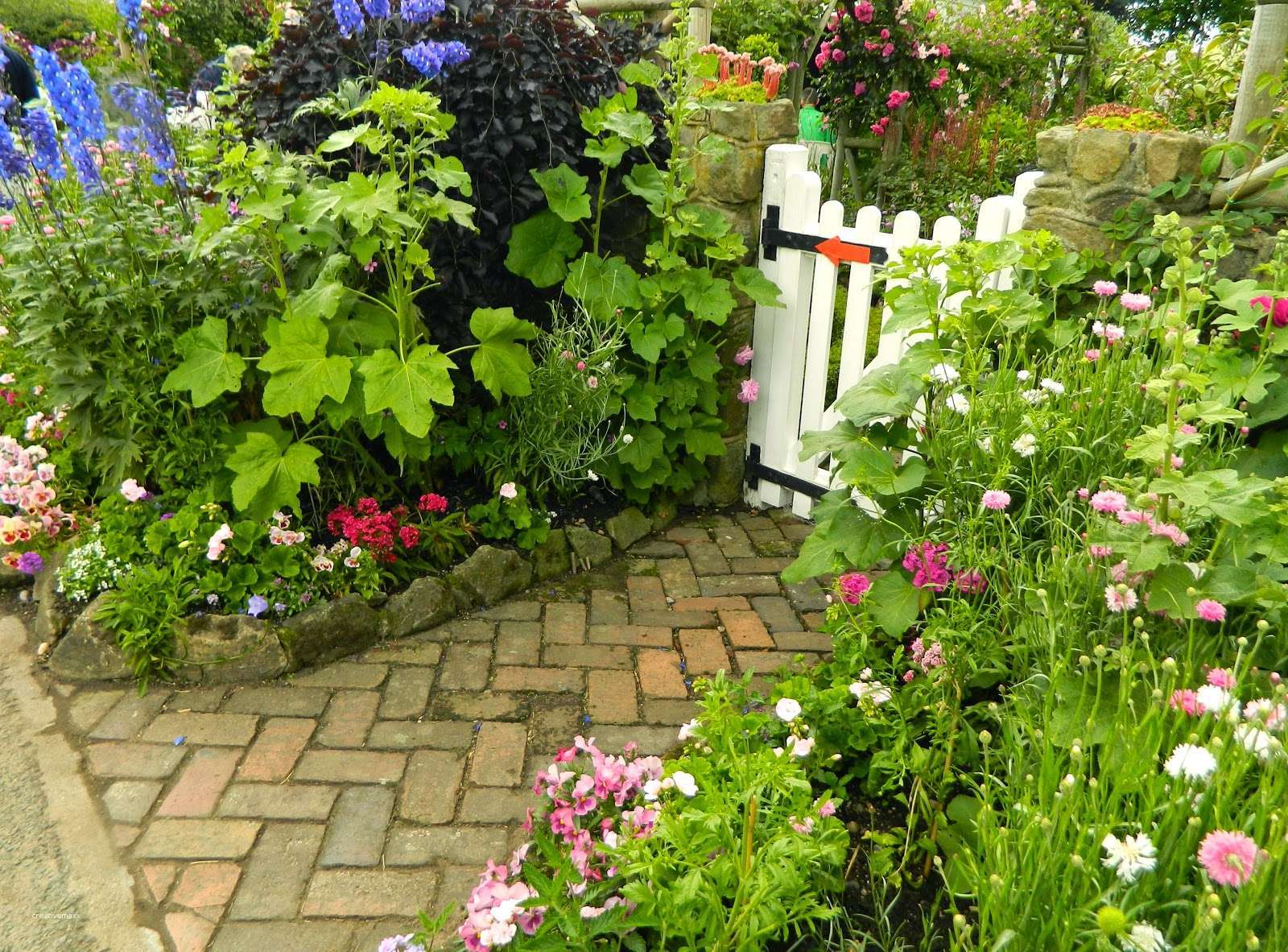
Source Image: interiorsherpa.com
Companion Planting in Cottage Gardens
Companion planting involves pairing plants that benefit each other, enhancing garden health and productivity.
Using Companion Plants for Pest Control and Pollination
Some plants can naturally repel pests or attract beneficial insects.
Table: Companion Plant Examples
| Companion Pair | Benefits | Example Pairings |
|---|---|---|
| Marigolds and Tomatoes | Repels nematodes | Plant marigolds near tomatoes |
| Basil and Peppers | Enhances flavor, repels pests | Plant basil around pepper plants |
| Carrots and Onions | Repels carrot flies and onion flies | Alternate rows of carrots and onions |
Companion Planting Strategies for Maximizing Garden Health
Strategically combining plants can improve soil health and increase yields.
Point List: Companion Planting Strategies
- Trap Cropping: Use sacrificial plants to lure pests away from main crops.
- Nitrogen Fixation: Plant legumes to enrich soil nitrogen levels.
- Pollinator Attraction: Include plants that attract pollinators to improve fruit set.
Attracting Wildlife to Cottage Gardens
Creating a habitat for wildlife enhances the ecological value and beauty of a cottage garden.
Creating Habitat for Birds, Bees, and Butterflies
Provide food, water, and shelter to attract a variety of wildlife.
Table: Wildlife Attraction Tips
| Wildlife | Habitat Needs | How to Attract |
|---|---|---|
| Birds | Food, water, nesting sites | Bird feeders, birdbaths, nesting boxes |
| Bees | Nectar-rich flowers, nesting materials | Plant bee-friendly flowers, provide bee hotels |
| Butterflies | Host plants for larvae, nectar sources | Plant butterfly-friendly plants, create sunny spots |
Incorporating Bird Baths and Bee Hotels
Bird baths and bee hotels offer essential resources for wildlife, enhancing garden biodiversity.
Point List: Benefits of Wildlife Features
- Pollination: Attracting pollinators boosts plant health.
- Pest Control: Birds and beneficial insects help control garden pests.
- Enjoyment: Observing wildlife adds to the garden’s enjoyment.
Cottage Garden Containers and Window Boxes
Containers and window boxes allow you to extend the cottage garden charm to smaller spaces and add vertical interest.
Planting Containers with Cottage Garden Favorites
Choose plants that thrive in containers to create mini cottage gardens.
Table: Container Gardening Tips
| Container Type | Suitable Plants | Placement Tips |
|---|---|---|
| Clay Pots | Herbs, small perennials | Place in sunny spots, ensure good drainage |
| Hanging Baskets | Trailing plants like lobelia, petunias | Hang in shaded areas to prevent drying |
| Window Boxes | Geraniums, ivy, marigolds | Install on windowsills for easy access |
Choosing Containers and Window Boxes to Complement Cottage Garden Style
Select containers that enhance the rustic, charming look of your garden.
Point List: Container Selection Tips
- Material: Use natural materials like clay or wood for a rustic look.
- Size: Ensure containers are large enough for root growth.
- Placement: Position containers to maximize visual impact and accessibility.
Cottage Garden Herb and Vegetable Beds
Combining herbs and vegetables with flowers creates a productive and visually appealing garden.
Interspersing Herbs and Vegetables Among Flowers
Integrating edible plants adds both beauty and utility to your garden.
Table: Edible Plants for Cottage Gardens
| Plant Type | Examples | Benefits |
|---|---|---|
| Herbs | Basil, thyme, chives | Aromatic, culinary uses, attract pollinators |
| Vegetables | Lettuce, kale, tomatoes | Fresh produce, ornamental foliage |
| Edible Flowers | Nasturtiums, pansies, marigolds | Decorative, edible petals |
Designing Productive and Ornamental Edible Gardens
Plan your garden to balance productivity with visual appeal.
Point List: Designing Edible Gardens
- Mixed Planting: Combine flowers and edibles in each bed.
- Aesthetic Layout: Arrange plants for both beauty and accessibility.
- Seasonal Rotation: Rotate crops to maintain soil health and productivity.
Cottage Garden Seasonal Interest
Plan for year-round beauty by selecting plants that provide interest in every season.
Planning for Year-Round Beauty
Choose a variety of plants to ensure continuous visual appeal.
Table: Seasonal Interest Plants
| Season | Plants | Features |
|---|---|---|
| Spring | Tulips, daffodils, primroses | Early blooms, vibrant colors |
| Summer | Roses, lavender, sunflowers | Peak flowering, strong scents |
| Fall | Asters, sedums, ornamental grasses | Late blooms, foliage color |
| Winter | Holly, evergreen shrubs, winter-blooming hellebores | Winter interest, structure and form |
Selecting Plants for Spring, Summer, Fall, and Winter Interest
Ensure your garden looks attractive throughout the year by incorporating plants that offer seasonal beauty.
Point List: Seasonal Planting Tips
- Spring: Plant bulbs in fall for early spring blooms.
- Summer: Choose long-blooming perennials and annuals.
- Fall: Incorporate plants with colorful foliage and late blooms.
- Winter: Use evergreens and plants with interesting bark or berries.
Personalizing Your Cottage Garden
A cottage garden should reflect your personal style and preferences. Add unique touches to make it truly yours.
Adding Personal Touches and Sentimental Elements
Incorporate items that have personal meaning to enhance the garden’s charm.
Table: Personalization Ideas
| Item | Personalization Tip | Impact |
|---|---|---|
| Family Heirlooms | Use old tools or furniture from family | Adds sentimental value |
| DIY Projects | Create homemade garden decor | Reflects your creativity and effort |
| Custom Signs | Add personalized garden signs | Makes the garden uniquely yours |
Expressing Your Creativity and Style in Cottage Garden Design
Use your garden as a canvas to express your creativity and style.
Point List: Creative Garden Ideas
- Themed Areas: Create sections with specific themes, such as a fairy garden.
- Artistic Displays: Use sculptures, mosaics, or painted pots.
- Personal Stories: Plant flowers that have personal significance or tell a story.

